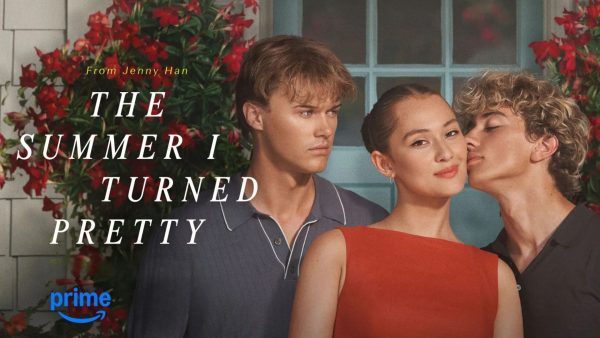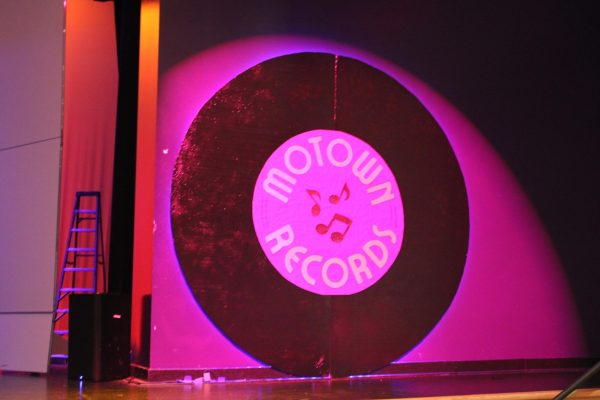History of “House of the Rising Sun”

A cautionary tale of leading one’s life in sin and the loss of free will.
The year is 1964, and an up and coming British rock band called The Animals got the opportunity of a lifetime: to play an opening for one of the original rockstars, Chuck Berry, during a tour in England.
While other bands in their position would play Rock and Roll songs, something that many would do in an attempt to one up Berry, lead singer of The Animals, Eric Burdon, knew that one couldn’t just out rock Chuck Berry. Instead they needed something different that didn’t make it seem like they were just trying to copy Berry.
“It was a great song for the Chuck Berry tour because it was a way of reaching the audience without copying Chuck Berry,” said Burdon in an interview with Songfacts.
“House of the Rising Sun” garnered a substantial amount of positive attention and while still on tour, the band recorded the single version in one take while in between stops. Soon after the release, the song hit number one on the charts in England, as well as the United States and Canada a few months later, beating out many other bands in the “British Invasion” of the 1960’s. However, this wasn’t the debut of a new song.
While in today’s day in age we are used to different artists taking inspiration, having similar styles, or sampling different pieces of music. Early rock and roll, and music in general, had a problem of borrowing elements of songs and artists copying each other. Some can look to the “King” of Rock and Roll, Elvis Presley, for example, as people have claimed he stole music or taken credit for other’s work. A blatant example is his song “Hound Dog’‘ which actually is from a woman called Big Mama Thorton who released it in 1952 only to have Elvis release his version in 1956 and be far more successful. But while Elvis was aware of Thorton’s version, he actually based his off a version by the group Freddie Bell and the Bellboys who released it in 1955.
The previously mentioned Chuck Berry was no stranger to this as the opening riff to his 1958 rock and roll hit “Johnny B. Goode” as well as elements from some of his other songs were used by the likes of The Beatles in “I Saw her Standing There” and “Come Together” who had both borrowed bass riffs, and The Beach Boys with “Surfin’ U.S.A” which borrowed heavily from Berry’s song “Sweet Little Sixteen” and “Fun Fun Fun” outright using the same opening riff as “Johnny B. Goode.”
But Chuck Berry himself also took bits and pieces from other artists as that same riff was taken from a RnB song “Ain’t that Just Like a Woman” by Louis Jordan released in 1946. The opening riff, played by Carl Hogan, came from a piano riff originally. This trend continued well past the 50’s such as artists like Dion DiMucci’s later career relying on covers of popular songs. But “House of the Rising Sun” isn’t an example of this as it is a piece of folk music that can possibly date back to the 1600’s, although with little evidence to suggest so.
First one must ask, what is folk music? Putting it simply, folk music is a genre of songs created within communities of people as a way of telling history, a story, or a lesson. These songs tended to stay within these communities unless travelers happened to pass through.
“The main thing is just identity,” choir director Ms. Kelley Squires said.
A big part of how folk music spread was snake oil salesmen. They would have people play songs to entice the locals of the area to buy their placebos, as these salesmen would travel from place to place they would pick up new songs and routines to play as well as change and tweak them a little bit to fit a new narrative or adapt it to fit the area the salesman may currently be in.
“Most of it was entertainment because there just wasn’t much else to do,” said Squires.
This process led to the same base song having several different versions and differences in how it was played as well as different narratives and themes.
“House of The Rising Sun” is an example to this process as it has been changed all through its existence both lyrically and even changing genres as different artists performed it such as Raegaa through Gregory Isaacs or Disco through Dolly Parton.
“A lot of the folk music in America is definitely derived from all of the immigrant nations that have come in,” Squires said.
It has even been parodied with the game “Wolfenstein: The New Order” having a version of the song in German bearing the same title talking about a house in New Berlin in an alternate history where the Nazis won World War II.
With the versions that exist today, the topics and ideas range from the “house” being a metaphor for a dysfunctional family. To it being a literal house in reference to a coffee house, a pub, a gambling house, or a women’s prison. The perspective of the author also changes from female to male between versions.
“Folk generally refers to the common people -those that generally don’t have power in society,” history teacher Mr. Wes Batcheller said.
As it is with most folk songs, the author of “House of the Rising Sun” is unknown and will probably forever remain that way. The earliest known recording of the song in 1933 under the title “Rising Sun Blues” comes from traveling musicians Clarence “Tom” Ashley and Gwen Foster. When asked years later where Ashley got the song from, he said he got it from his grandparents adding, “it’s too old to talk about”.
Three years later, a traveling ethnomusicologist named Alan Lomax made several field recordings of folk music from across the United States for the archive of American folk song at the Library of Congress. The version of “Rising Sun Blues” Lomax recorded was from a woman named Georgia Turner in Middleboro, Kentucky.
Soon after in Greenwich Village, New York, Lomax would share his recording with other artists such as Woody Guthrie and Pete Seeger. Others such as Lead Belly ended up recording two versions of the song, one a bit more fast-paced and from the perspective of a down on his luck rambler. The other with his wife singing and playing the part of the poor girl.
Then comes the 1940’s and in the United States, a movement called the “Folk Music Revival” takes hold in New York as old folk songs are played by various artists.
In the previously mentioned Greenwich Village, Dave Van Ronk played a rendition of “House of the Rising Sun,” which gained a substantial amount of popularity. Then in 1962, borrowing some elements from Dave’s version, a singer by the name of Bob Dylan released his version which gained even more popularity. It gained so much popularity that people believed the version by Dave was a copy despite coming out before Dylan’s.
In the same year a woman named Nina Simone recorded a live version released on the album “Live at the Village Gate”. And seven years later she recorded another much faster version on her album “Nina Simone SIngs the Blue,” which displayed the versatility of the song.
But it was Dylan’s version that brought the song back across the Atlantic into England. The Animals needed a song to wow the audience and with “House of the Rising Sun” being in the public domain, they decided to make their own rendition.
The Animals took Van Ronk’s version but electrified the guitar, broke chords down into a set of arpeggios, changed the time signature from a 4/4 beat to a 6/8 time, and added an organ to the roster of instruments. They also took inspiration from Dylan’s version lyrically but changed the perspective from female to male, as well as other small changes.
While other versions of “House of the Rising Sun” have been made since the rendition by The Animals, none have reached the same amount of popularity.

Gabriel Perez is a junior at RCHS, and this is his first year in journalism. He is a staff reporter in the school’s newspaper, The Cat’s Eye. His favorite...






Jeff McDonald • Jul 22, 2024 at 5:53 am
I was re-watching “TheUmbrella Academy” in anticipation of Season Fours upcoming release on Netflix. “House of the Rising Sun” is played in a poignant scene. I’d known the Animals version for years. I wanted to see the story behind the ominous lyrics.
A quick Google search directed me to Perez’s article. After reading it, I felt it necessary to praise the author and publication as I was verily impressed with the research and depth covered by the young author!
I hope Perez considers pursuing a music history and journalism career as I’d expect he’s capable of more than a one hit wonder.
Well done, Mr. Perez, and staff. That was quality journalism at any level!